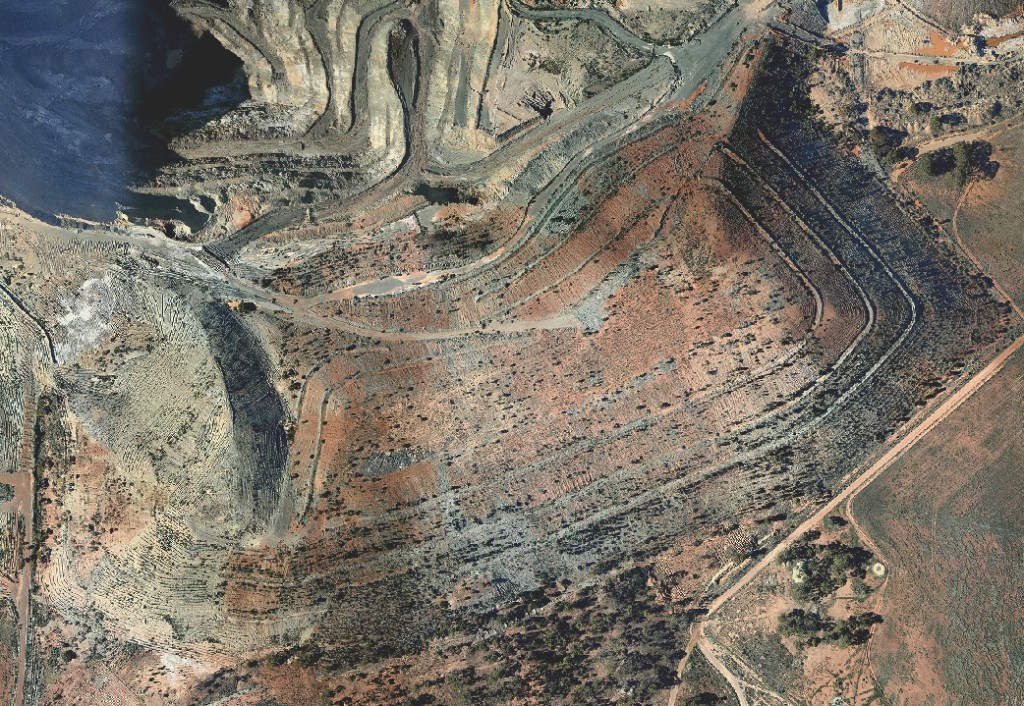A few months ago Gaia Resources was asked to estimate materials balances for waste dumps at various sites for a mining company in Western Australia. We had not done any similar work before, so we were happy to find a way to solve this problem for our client.
The first thing we did was a requirements analysis to find out what exactly our client needed. After a review, we realised that we did not need to acquire any new data, as all this had been collected by our client already for other purposes. Given the data was in hand, we started work very quickly on the methods. As there were a large number of waste dumps across a large area for which the volume of materials had to be calculated, we decided that using the available data in an automated method would be the best option for the client.
A subset of the mine site showing the aerial imagery
The data we had consisted of the waste dump polygons for various mine sites (see examples in the images below), NearMap photo maps as well as a tiled NearMap digital elevation model (DEM). Our preparation of the data for further processing included:
- The creation of a location index for the DEM tiles to identify those tiles that covered the actual mine sites,
- Creating mosaics of DEM tiles wherever waste dumps were located across several tiles (as below),
- Re-sampling the DEM tiles to a higher resolution using a nearest neighbour algorithm to closely fit the raster cells of the DEM to the waste dump polygons, and
- Deriving the base level elevation of each waste dump.
Converting DEM tiles to mosaic
The base level elevation was defined for each group of connected waste dumps (as below) by extracting the elevation at a number of points located close to the outside border of the waste dump polygons.
Calculating the base level around the waste dump polygons
For the actual volumetric calculations we assembled a number of Spatial Analyst tools (map algebra as well as zonal statistics) in a python script to automatically calculate volumes for each waste dump. These volumes were then used to derive waste dump type dependent material balances.
To account for the angled side walls and the subsequently different sizes of the bottom and the top areas of a waste dump, volumetric calculations needed to be carried out on a pixel by pixel basis as opposed to using the entire waste dump area. The resulting output was a table listing each waste dump and associated volumes of different types of materials such as topsoil and capping material.
This project was a great opportunity for us to be creative and develop a new method that delivers an easy solution to a problem we’ve not dealt with before – and solve our client’s problem for them.
If you have any questions or comments, feel free to email me, leave a message in the comments below, or start a conversation with Gaia Resources on Twitter.
Grit




Comments are closed.